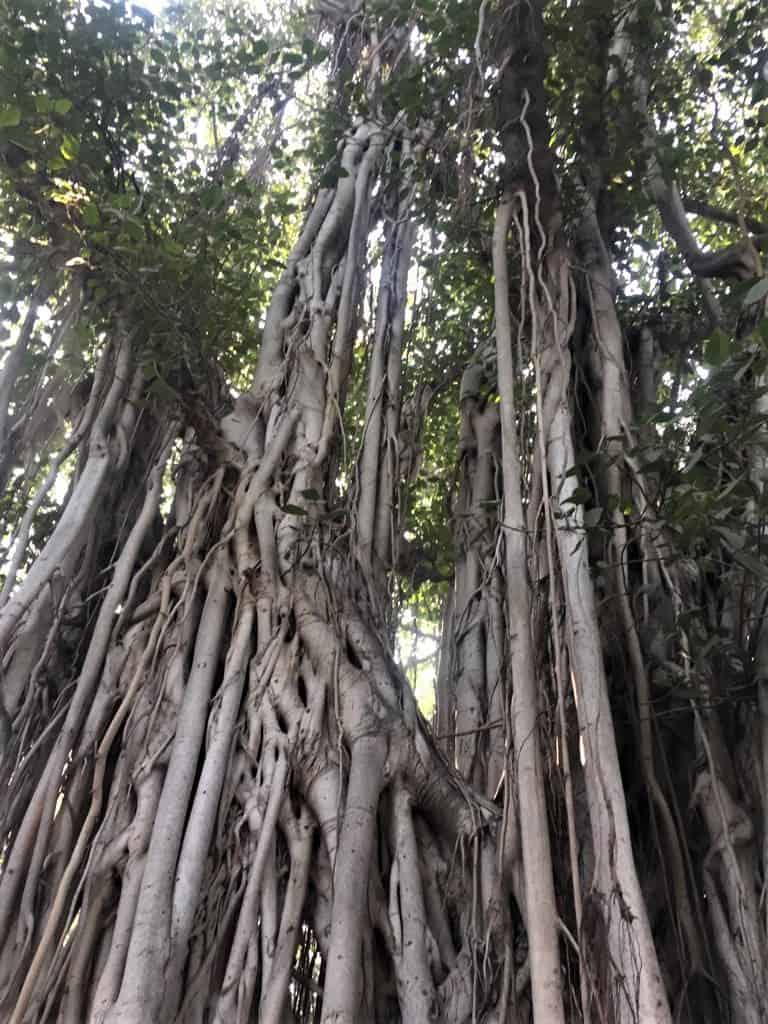These are no ordinary trees. These are the birds, the butterflies and the bees. These are where our kids sat immersed with books, stories and workshops in the annual children’s book festival. A fellow mom asks me, Where will kids have beautiful story sessions now? True, it wasn’t just the books but the magic of being in the lawns of the Indira Gandhi National Centre for the Arts (IGNCA) each spring season, frolicking and giggling under these angel guardians. And yet, 1,838 of these trees in and around the IGNCA campus, and the road in front of National Archives, are slated for transplantation as per a Government of India tender, to make way for the Central Vista redevelopment.
Just like every year, my son is finishing his environment-oriented holiday homework with the theme being climate change this time. I am wondering whether to tell him that the trees will be gone next year.
The government’s tender document mentions that 1150 trees with girth up to 50 cm, 401 of girth beyond 50 cm and up to 90 cm, 205 trees of girth between 90 cm and up to 150 cm, and 82 of girth beyond 150 cm would be transplanted at a cost of 1.87 crore. Permission of the Delhi Forest Department would be required, but nevertheless the tender has been floated. The question remains whether any alternatives to relocation of these trees around the IGNCA ever received serious thought amid all the grandiose plans for the Central Vista, as not much information is available in the public domain.
Most of these trees in and around the IGNCA are more than fifty years old, which makes them special trees. These peepal, amaltash, banyan, ficus and many others are our living heritage. They define the green urban character of this part of the capital. They support an entire ecosystem regulating the microclimate around.
Read more: The price of a new storm-water drain in Delhi: 600 trees and a park
The risks of transplantation
The World Air Quality report 2021 by Swiss technology company IQAir has ranked Delhi as the world’s most polluted capital. This transplantation exercise meant to facilitate the redevelopment plans for the Central Vista certainly doesn’t seem a wise move viewed from that perspective. Trees transplanted 20 km away will deprive this area of the oxygen considering each tree produces about 118 kg of oxygen a year. It will take the new saplings eons to compensate for the loss to the urban ecology.
The word transplantation is itself shrouded in mystery. India’s record on survival of transplanted trees has been miserable. Most of the 3800 trees transplanted for the Dwarka expressway project in 2021 are dead. A senior landscape professional tells me that a tree of any size can be transplanted with mega equipment and spending huge money, but survival is low as most authorities don’t have the time nor inclination to take care of these once relocated.
When I show him the big banyan tree he says ‘This is difficult because of its immense size and the fact that it is not one stem and root system. It’s a tragedy that this is happening.’
The Indian Express also recently quoted a Forest Department official as saying that transplanting any tree with a trunk girth of more than 80-90 cm is not advisable. The tree cannot bear the shock and will eventually die. One such humongous tree of the ficus family, 150 cm in diameter, stands at the western end of the IGNCA campus. The Mati Ghar building is smaller in size than this ficus.
The tender document talks about a paltry penalty of Rs 5000 in case the agency fails to videograph the entire process of translocation and submit it fortnightly to CPWD. The Delhi tree policy talks of slashing the contractor’s payment if survival rate of trees is less than 80%. But can these fines and penalties redeem the value of our prized possessions in the name of redevelopment? These natural oxygen towers need all our love and care, because we need them more today.



Absolutely they are our heritage.we have to preserve them
That is what we should strive for.